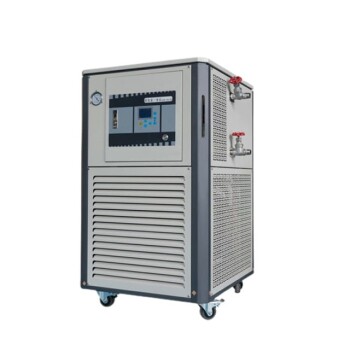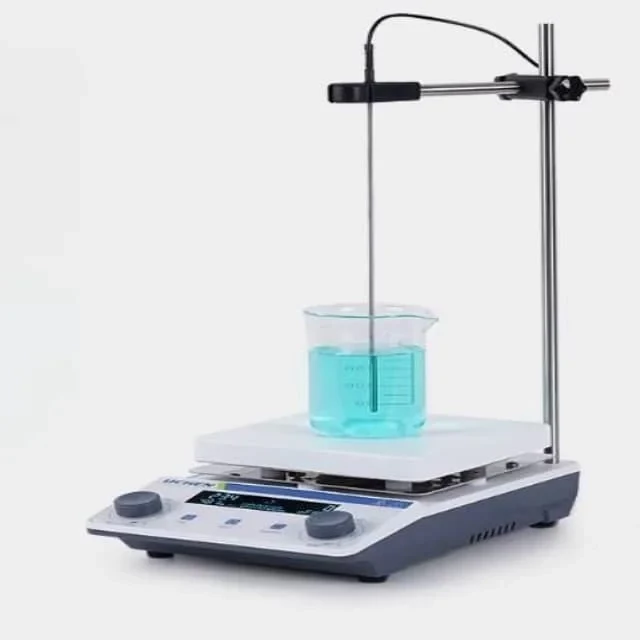
Shaking and mixing equipment
Laboratory Small Constant Temperature Heated Magnetic Stirrer Heater and Stirrer
Item Number : KTL-2
Price varies based on specs and customizations
Shipping:
Contact us to get shipping details Enjoy On-time Dispatch Guarantee.
Why Choose Us
Reliable PartnerEasy ordering process, quality products, and dedicated support for your business success.
Introduction
The Laboratory Small Constant Temperature Heating Magnetic Stirrer is a versatile tool designed for precise temperature control and efficient mixing in various laboratory applications. It features high torque ceramic magnetic stirrers resistant to damage and corrosion, ensuring thorough mixing and effective heat transfer. This compact device is ideal for small-scale reactions, offering safety features like modular setup and seamless adaptability. Its compatibility with world-leading brands of thermocirculators enhances its utility in diverse research and development environments.
Detail & Parts
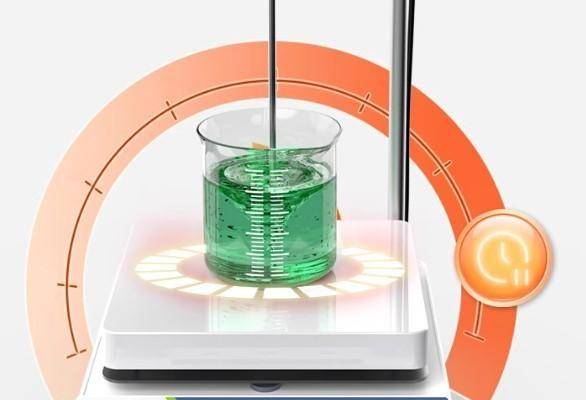


1. Heating plate 2. LCD display 3. Touch button
4. Temperature sensor interface 5. Adjustment knob 6. Shock-absorbing foot
Technical Parameters
| Model | KTL-HA | KTL-HB |
|---|---|---|
| Display mode | LCD | LCD |
| Speed range | 100~1600rpm | 100~2000rpm |
| Speed control accuracy | ±10rpm | ±10rpm |
| Timing range | 1~99h59min | 1~99h59min |
| Temperature control range | RT~300℃ |
Tray RT~350℃ Sample RT~250℃ |
| Temperature control accuracy |
Tray ±3℃ Solution ±0.5℃ |
<100℃±0.5℃/ >100℃±1℃ (Solution) |
| Maximum stirring volume (H2O) | 5L | 20L |
Applications
The laboratory small constant temperature heating magnetic stirrer finds its utility in a variety of scientific and industrial applications where precise temperature control and agitation are required. This device is particularly beneficial in scenarios where maintaining a homogeneous mixture is crucial, and where thermal degradation needs to be minimized. Below are the main application areas:
- Chemical Synthesis and Reaction Monitoring: Used for maintaining precise temperatures during chemical reactions to ensure optimal conditions and prevent degradation of reactants.
- Pharmaceutical Development: Essential for the preparation of drug formulations, ensuring uniform mixing and controlled heating to prevent thermal degradation of active pharmaceutical ingredients.
- Biotechnology and Molecular Biology: Used in the preparation of reagents, buffers, and media, as well as in the homogenization of biological samples.
- Environmental Testing: Employed in temperature-controlled experiments to simulate environmental conditions and study their effects on materials and samples.
- Food Science and Development: Useful for temperature simulations and quality checks in food development, ensuring consistent and controlled heating during various processes.
- Material Testing: Used in the testing of materials under controlled temperature conditions to evaluate their properties and performance.
- Electronics Cooling and Thermal Management: Essential in laboratory settings where miniaturized equipment generates heat, requiring efficient dissipation to maintain optimal performance.
Designed for You
KinTek provide deep custom made service and equipment to worldwide customers, our specialized teamwork and rich experienced engineers are capable to undertake the custom tailoring hardware and software equipment requirements, and help our customer to build up the exclusive and personalized equipment and solution!
Would you please drop your ideas to us, our engineers are ready for you now!
FAQ
How Does The Magnetic Stirrer Prevent Thermal Degradation?
What Materials Are Magnetic Stir Bars Typically Made From?
Can I Use A Magnetic Stirrer For Biological Applications?
What Is A Thermal Element?
How Does A Thermal Element Work?
What Are The Advantages Of Using Thermal Elements?
What Are The Different Types Of Thermal Elements?
How Should Thermal Elements Be Calibrated And Maintained?
4.7
out of
5
Exceptional precision and durability. This stirrer has transformed our lab processes with its reliable performance.
4.8
out of
5
Incredible value for money. The constant temperature control and magnetic stirring are top-notch.
4.9
out of
5
Highly advanced technology. This stirrer handles complex reactions effortlessly, enhancing our research quality.
4.7
out of
5
Durable and efficient. The stirrer's build quality ensures long-term use without compromising performance.
4.8
out of
5
Speedy delivery and excellent product. The stirrer's versatility makes it indispensable in our lab.
4.9
out of
5
Outstanding quality and safety features. This stirrer has significantly improved our lab's efficiency.
4.7
out of
5
Perfect for small-scale reactions. The stirrer's compact design and powerful performance are a winning combination.
4.8
out of
5
Technologically advanced and user-friendly. This stirrer has become a staple in our daily lab routines.
4.9
out of
5
Reliable and efficient. The stirrer's constant temperature control has made our experiments more consistent.
REQUEST A QUOTE
Our professional team will reply to you within one business day. Please feel free to contact us!
Related Products
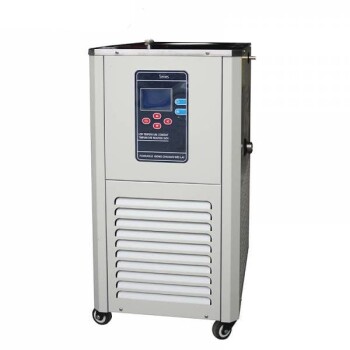
Maximize lab efficiency with the KinTek KCP 5L Chilling Circulator. Versatile and reliable, it provides constant chilling power up to -120℃.

Efficient and reliable, KinTek KHB Heating Circulator is perfect for your lab needs. With a max. heating temperature of up to 300℃, it features accurate temperature control and fast heating.

30L Chiller Water Bath Cooling Circulator Low Temperature Constant Temperature Reaction Bath
Keep your lab cool with the KinTek KCP chilling circulator - ideal for constant chilling power and adaptable to meet all your working needs.

40L Chiller Water Bath Cooling Circulator Low Temperature Constant Temperature Reaction Bath
Get efficient and reliable chilling power with KinTek KCP circulating chiller. With a max. temp of -120℃, it's an ideal equipment for different working circumstances.
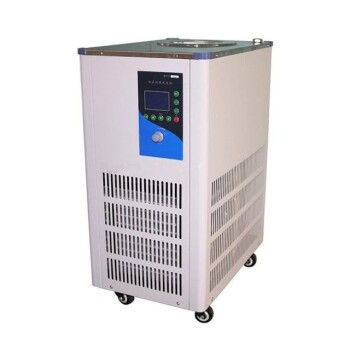
Get reliable and efficient chilling power for your lab or industrial needs with KinTek KCP chilling circulator. With max. -120℃ temperature and built-in circulating pump.

Get versatile lab performance with KinTek KCBH 30L Heating Chilling Circulator. With max. heating temp of 200℃ and max. chilling temp of -80℃, it's perfect for industrial needs.
Related Articles

Basic Constant Temperature Heating Equipment in Laboratories
Overview of various constant temperature heating devices used in laboratories.

Laboratory Heating Equipment Safety
Discusses the importance of safety in using electrothermal thermostatic water baths and constant temperature oil baths in laboratories.

Choosing the Right Heating Method for Laboratory Experiments
Discusses different heating methods in labs and their suitability for various experiments.

Basic Mixing Equipment in the Laboratory
Overview of essential laboratory mixing devices and their functionalities.

Choosing the Right Heating Method in Laboratory Experiments
Understanding the differences between metal bath, water bath, and thermostat heating methods for various lab experiments.

Basic Laboratory Reaction Equipment
Overview of essential lab equipment for chemical reactions under various conditions.

Preparation and Finishing Work for Using a Low-Temperature Thermostatic Reaction Bath
Guidelines on preparatory and finishing tasks for using a low-temperature thermostatic reaction bath.

Laboratory Equipment Safety: Guidelines for Heating Equipment
A comprehensive guide on safe practices for using high-temperature heating equipment in laboratories.

Features and Precautions of Laboratory Water Bath Equipment
An overview of the features and safety precautions for laboratory water bath equipment.

Comprehensive Guide to Thermostatic Water Baths
Detailed overview of thermostatic water baths, including usage, precautions, common issues, maintenance, and calibration.

Basic Laboratory Test Chamber Equipment
Overview of essential lab test chambers for various environmental simulations.

Basic Laboratory Drying Equipment
Overview of various drying equipment used in laboratories, including vacuum, blast, electric heating, hot air disinfection, and infrared drying ovens.
